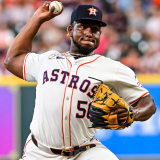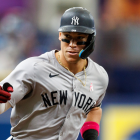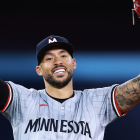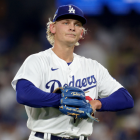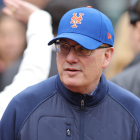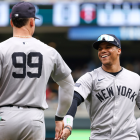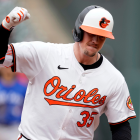Nippon Professional Baseball, the world's second-most prominent baseball league, is scheduled to launch its season on Friday, June 19, three months after its original Opening Day plans were delayed due to the spread of the novel coronavirus. NPB is set to become the third league to do so this year, joining Chinese Professional Baseball League (Taiwan) and Korea Baseball Organization (KBO).
Because the status of MLB's season is still up in the air and American fans have more incentive than usual to get into NPB, we wanted to provide a primer on the league, its teams, and its players. Below you'll find answers to six pressing questions facing anyone who hopes to enjoy the season.
How is the league structured?
NPB features 12 teams split across two leagues: the Central League and the Pacific League. In that sense, it's configured a little like MLB.
The Central League includes the Chunichi Dragons, the Hanshin Tigers, the Hiroshima Toyo Carp, the Tokyo Yakult Swallows, the Yokohama DeNA BayStars, and the Yomiuri Giants.
The Pacific League, conversely, includes the Chiba Lotte Mariners, the Fukuoka SoftBank Hawks, the Hokkaido Nippon-Ham Fighters, the Orix Buffaloes, the Saitama Seibu Lions, and the Tohoku Rakuten Golden Eagles.
Who are the best teams?
The best regular-season teams last year were the Saitama Seibu Lions (80-62) and the Yomiuri Giants (77-64). Despite their regular-season records, those teams did not meet in the Japan Series, NPB's version of the World Series. Instead, the Lions were knocked off by the Fukuoka SoftBank Hawks, who then swept the Giants to win the title.
The other teams to make it to the Climax Series, NPB's postseason, were the Yokohama DeNA BayStars, the Hanshin Tigers, and the Tohoku Rakuten Golden Eagles.
Historically, no team has won more championships than the Giants, with 22. The Lions (13) and the Hawks (10) are the only other NPB franchises with double-digit title counts.
What is a standard season like?
In a normal year, every NPB team plays 143 games. Unlike MLB, where off days vary, NPB has a set schedule: every Monday is an off day, and teams play the other six days of the week.
It's worth noting that NPB is (or at least was) similar to MLB in another way: one league (the Pacific) uses a designated hitter while the other does not, much like the American and National Leagues.
Are there any other differences compared to MLB?
A few, beginning with the existence of ties -- even during the Japan Series. Games go extra innings, but are declared ties if they're still knotted after 12 frames.
Roster sizes are also larger in NPB, as teams are permitted to carry 28 players at a time. That established, teams have to scratch three players entering each game.
NPB teams tend to use six-man rotations, which is part of the reason the Los Angeles Angels have adapted that approach since signing Shohei Ohtani.
Any former MLB players in the league?
Oh, of course. In the Pacific League alone, there's Adam Jones, Daisuke Matsuzaka, and Matt Moore, among others. You can check out MLB Trade Rumors' recent post for a more complete list. Teams are limited in how many American players they can carry at a time, and they can't just load up on pitchers or hitters if they employ four or more.
Who are some other players worth knowing?
The best hitters in NPB last season who have no MLB experience were outfielder Seiya Suzuki (Carp), catcher Tomoya Mori (Lions), and shortstop Hayato Sakamoto (Giants), who won the league's MVP Award.
The best pitchers, conversely, were right-hander Kodai Senga (Hawks), left-hander Shota Imanaga (Bay Stars), and right-hander Yasuaki Yamasaki (Bay Stars), according to DeltaGraphs' Wins Above Replacement metric.








